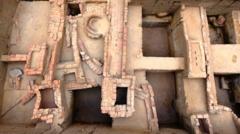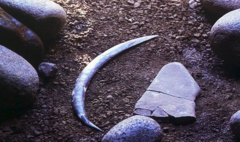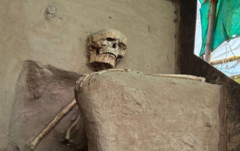Rakhaldas Banerjee, an Indian archaeologist whose career was marked by brilliance and controversy, made a significant historical discovery in the early 1900s when he unearthed Mohenjo-daro, meaning "mound of the dead men" in Sindhi, located in modern-day Pakistan. This ancient city was a vital part of the thriving Indus Valley Civilization, which extended from northeast Afghanistan to northwest India during the Bronze Age.
The Unheralded Legacy of Rakhaldas Banerjee: An Indian Pioneer of Archaeology

The Unheralded Legacy of Rakhaldas Banerjee: An Indian Pioneer of Archaeology
Discover the remarkable story of Rakhaldas Banerjee, the innovative Indian archaeologist who uncovered the Indus Valley Civilization but remains largely forgotten today.
Working for the Archaeological Survey of India (ASI) under British colonial rule, Banerjee was an adventurous explorer and skilled epigraphist. He dedicated months to searching for ancient artifacts and ruins across the subcontinent. However, his remarkable work was overshadowed by disputes stemming from his fierce independence and disregard for colonial protocols, damaging his legacy.
Banerjee's groundbreaking discovery of Mohenjo-daro was not properly credited to him; his reports were never published by the ASI. Archaeologist PK Mishra claimed that ASI's chief John Marshall suppressed Banerjee's findings for his own gain. While history books often credit Marshall with the discovery, Banerjee is relegated to a mere footnote, as highlighted by historian Nayanjot Lahiri in her book, "Finding Forgotten Cities: How the Indus Civilization Was Discovered."
Banerjee's controversial actions in the ASI included attempting to acquire artifacts without proper authorization and excessive spending of excavation funds. Despite his unorthodox methods that occasionally ruffled feathers within the ASI, he greatly impacted the field, especially in Bengal, where his ties to Mohenjo-daro are cherished.
Born in Bengal in 1885, Banerjee developed an interest in history from the medieval monuments surrounding his hometown. He quickly rose through the ASI ranks from excavation assistant in 1910 to superintending archaeologist in western India by 1917. His efforts in excavating Mohenjo-daro from 1919 revealed critical aspects of this remarkable civilization, uncovering ancient artifacts that deepened understanding of urban settlements that flourished more than 5,300 years ago.
Despite these achievements, Banerjee's involvement with Mohenjo-daro ended when his funding was exhausted in 1924, leading to a transfer due partly to mishandled finances. As his reputation waned, he faced allegations related to idol theft, though these charges were later dismissed. However, they contributed to his resignation from the ASI in 1927.
Afterward, Banerjee continued to engage in academia at Banaras Hindu University, where he served as a professor. Unfortunately, his lavish lifestyle led to financial difficulties, and he passed away just two years after joining BHU at the age of 45.
Despite obscurity, Rakhaldas Banerjee's extraordinary contributions marked a crucial chapter in the history of archaeology and the discovery of the Indus Valley Civilization. As further research into this fascinating period unfolds, Banerjee's legacy continues to merit acknowledgment among scholars and historians alike.
Banerjee's groundbreaking discovery of Mohenjo-daro was not properly credited to him; his reports were never published by the ASI. Archaeologist PK Mishra claimed that ASI's chief John Marshall suppressed Banerjee's findings for his own gain. While history books often credit Marshall with the discovery, Banerjee is relegated to a mere footnote, as highlighted by historian Nayanjot Lahiri in her book, "Finding Forgotten Cities: How the Indus Civilization Was Discovered."
Banerjee's controversial actions in the ASI included attempting to acquire artifacts without proper authorization and excessive spending of excavation funds. Despite his unorthodox methods that occasionally ruffled feathers within the ASI, he greatly impacted the field, especially in Bengal, where his ties to Mohenjo-daro are cherished.
Born in Bengal in 1885, Banerjee developed an interest in history from the medieval monuments surrounding his hometown. He quickly rose through the ASI ranks from excavation assistant in 1910 to superintending archaeologist in western India by 1917. His efforts in excavating Mohenjo-daro from 1919 revealed critical aspects of this remarkable civilization, uncovering ancient artifacts that deepened understanding of urban settlements that flourished more than 5,300 years ago.
Despite these achievements, Banerjee's involvement with Mohenjo-daro ended when his funding was exhausted in 1924, leading to a transfer due partly to mishandled finances. As his reputation waned, he faced allegations related to idol theft, though these charges were later dismissed. However, they contributed to his resignation from the ASI in 1927.
Afterward, Banerjee continued to engage in academia at Banaras Hindu University, where he served as a professor. Unfortunately, his lavish lifestyle led to financial difficulties, and he passed away just two years after joining BHU at the age of 45.
Despite obscurity, Rakhaldas Banerjee's extraordinary contributions marked a crucial chapter in the history of archaeology and the discovery of the Indus Valley Civilization. As further research into this fascinating period unfolds, Banerjee's legacy continues to merit acknowledgment among scholars and historians alike.




















